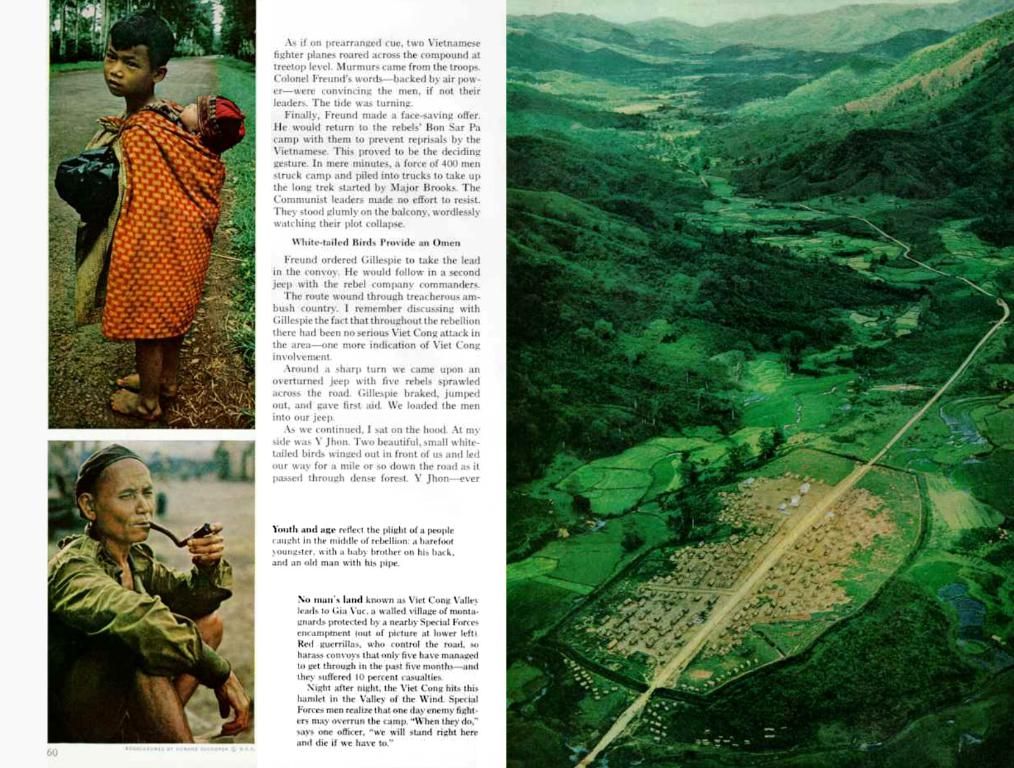Avoid Reliance on AI for Outdoor Expedition Planning: Potential Hazards and Limitations
Get ready to roll the dice, buddy! Let's ditch the routine with AI-generated trip plans.
On a quest for something extraordinary? Just type, "best secret spots for hiking nearby," and BAM! Instant excitement... or so they say.
But here's the deal: AI ain't got a clue about the real deal. It won't guide you to that secluded paradise that nobody talks about. If you're craving the real McCoy, something mind-blowing, you'll need to look beyond the algorithm.
Let me walk you through five solid reasons AI trip planning is a big fat no-go for outdoor adventures:
1. Predictable, Boring Recommendations
Put in minimal effort, get minimal results. Here's your run-of-the-mill top 5 hiking trails in the entire park. Talk about waste of data!
And if you don't fancy hiking up mountains for days? Well, now you're down to two trails. And these aren't even the ones with epic vistas or breathtaking scenery.
Remember, it's a bunch of wires and code... It's never taken a leisurely stroll through nature. Go try this for yourself, and you'll end up with basic trail options, no matter where you're planning your adventure.
2. Sometimes, It's Dead Wrong
Let's take a moment to discuss AI's momentary lapses in judgment, aka "the Hallucinations." You might be bamboozled by trail distances, difficulty levels, even trail names. "Avalanche Lake via Trail of Cedars" can't possibly be 4.5 miles, right? AllTrails lists it as 5.9 miles. And when we took the hike ourselves? It clocked in at a whopping 6 miles. That's not a drop in the bucket.
And the Highline Trail isn't 11.8 miles, like AI tells you... It's actually 14.9 miles!
Now picture this: you've done your planning and partnership with the machine has led you astray. Or should we say, miles astray?
3. It's a Clueless Navigator
Another perfect example of AI's occasional blunders...
You ask for hikes near Whitefish, Montana, and it casually tosses out a trail that's over an hour away.
That's a recipe for disaster if you're trying to stick to a strict travel itinerary.
This happens because AI doesn't use maps, like a real traveler would. It doesn't know which trail is close to another or what's practical for day trips. It pulls from data based on algorithms, not on real-world geography or research.
4. It Can't Support Local Businesses
OK, so maybe AI can give you a faint starting point. But it's no replacement for the real-life experiences you gain through your own research.
When you do your own digging, you get more than accurate information – you're supporting the hardworking folks who explore these trails and share their stories.
That includes:
- Local travel bloggers with detailed guides
- Outdoor writers who live and breathe the local landscapes
- Hikers who leave honest reviews and insights
These folks know secrets that AI can't. Like warning you about hidden dangers, like discreet river crossings or washed-out trails, during specific seasons or weather conditions. They also keep their information up-to-date – something you can't expect from AI.
So before you hit the trail, make it a point to read a few travel blogs, visit local websites, and follow people who live and breathe the outdoors. Your adventure will be safer and more enjoyable – and you'll be supporting the local outdoor community in the process.
- AI-generated trip plans may provide predictable and uninspiring trail recommendations, missing out on secluded, off-the-beaten-path hiking spots that truly cater to outdoor-living and backpacking lifestyles.
- AI can sometimes be incorect about trail distances, difficulty levels, and names, leading to misleading information that may negatively impact your hiking adventure and outdoor-living experiences.
- AI systems are not equipped with the ability to use maps or navigate in the real-world like a human traveler, making them less reliable for practical and efficient planning of hiking trips and outdoor-living itineraries.
- AI-generated advice falls short in supporting local businesses and community members, as it lacks the insider knowledge and personal experiences that bloggers, outdoor writers, and hikers possess about trails, local conditions, and adventure tips, vital for safe and enjoyable adventure lifestyle experiences.




